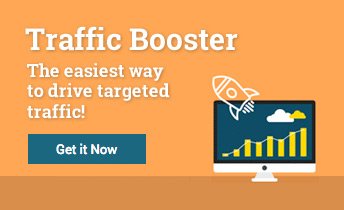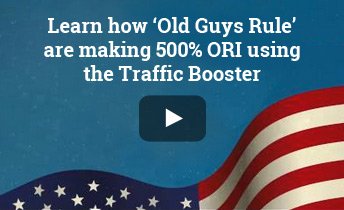How AI Is Already Used to Create, Manage, and Optimize Online Advertising
Since the rise of artificial intelligence, marketers have been looking for ways to use these new AI and machine learning technologies to streamline their businesses and boost results. And with the online competitive landscape even more crowded than ever before, it’s almost impossible to compete without harnessing the power of AI.
This is no more prevalent than in the online advertising space, where AI technology, in combination with machine learning, is now being used to manage, run, and/or optimize online advertising for almost every niche.
So how is AI already being used for online advertising?
In this article, we will highlight the AI technologies already being used in key online advertising tasks by leading digital marketing services. Including:
- Budget and bid adjustments
- Online advertising feed modification
- Online advertising ad copy
- Digital ad exclusion optimization
- Best-selling product selections
- Category ROAS
- Multichannel advertising optimization
1. Budget and Bids Adjustments
Knowing when to push which product is vital to the success of online targeted ads aimed for performance. Until a couple of years ago, this was mainly done manually, which left a lot of potential improvements (sales) falling through the cracks. When an online retailer has a vast amount of product categories or campaign types, this becomes virtually impossible.
Enter AI, and its ability to change the budget and bids according to the season, location, niche and realtime performance.
With the introduction of AI, campaign budgets and bids have now automatically adjusted according to their real-time performance as well as their forecasted performance. For example, a merchant may have a product that sells better on weekends, in winter, or on specific days of the year, like Father's Day. AI is able to adjust the budget and bids to get peak performance during these times, and optimizing budgets will improve ROAS.
This is particularly helpful for marketers during peak season Facebook and Google Ads holiday campaigns.
 [Source: Google]
[Source: Google]
2. Online Advertising Feed Modification
An advertising product feed includes each product's complete title and description as displayed on an online store product page. However, these feeds should be modified to meet different advertising methods and best practices to maximize performance potential.
Why? An advertising channel may not identify the right product trigger without tweaking titles. AI is now used to doing just that, ensuring each advertising method gets its own feed modification according to its best practices.
Let’s say you are running Google Shopping ads. AI, familiar with Google’s trigger requirements, can add the words "Size XL" and "Unicorn image" to "Black T-shirt" so that Google Shopping better knows when to trigger an ad related to that product.
3. Online Advertising Ad Copy
Online ads are made up of a combination of headline text, phrases, and descriptions. The old-school way of optimizing digital advertising copy was to create a few ads by varying the copy and then testing them (with a small budget) to find the best combination of text in conversions.
Thanks to AI technology, a lot of this process is now automatic, based on real-time data. It does this by optimizing ads and phrases according to real-time performance stats. AI used by Google Performance Max campaigns, for instance, will automatically generate and then optimize ads and phrases based on the performance stats of those campaigns in real-time.
4. Digital Ad Exclusion Optimization
Creating, tweaking, and optimizing online advertising to peak performance is as much about exclusion as it is about inclusion. Something that AI is already being used for.
There are four main exclusions that AI is being used for. Here’s a breakdown of each:
- Keyword exclusions. AI can now learn which keywords should be excluded per niche and what keywords should be excluded for a specific store. For example, if a keyword received many impressions but no clicks, AI would then exclude it, as well as for keywords that receive many clicks but no conversions.
- Placement exclusions. AI learns which placements should be excluded per niche and then launches the best placement for a store in that niche. Over time, AI can understand each store better and then further exclude placements according to each specific merchant's performance.
- Audience exclusions. AI learns which audiences should be excluded per niche and launches the best audiences for a store in that niche. Then, over time AI is able to further exclude audiences according to the store's performance as it gathers more specific data.
- Topics exclusions. AI knows which topics should be excluded per niche and launches the best topics for a store in that niche. Over time AI can gather data and learn about each specific store and then further excludes topics according to each particular store's performance.
5. Best-Selling Product Selection
Another way AI is currently being used in online advertising is best-selling product selection. AI is able to learn which products are performing best in each niche. It can then automatically prioritize these products for campaigns, which in turn can maintain ad performance and overall conversion rates.
6. Category ROAS (Return On Ads Spend)
Another area in online advertising where AI is being used is with the category ROAS. As we know, each industry niche or category will have a different average ROAS.
If merchants haven’t set their own desired ROAS or don’t know what they could expect, AI technology can learn and leverage these industry average ROAS per category or niche to optimize the performance of the campaigns. This is very important as it determines whether the campaigns would be profitable for the merchant.
Bonus Content: eCommerce Conversion Rates per Niche [2022 Benchmarks]
7. Multichannel Advertising Optimization
One of the best-known ways AI is being used with online advertising is through multichannel advertising optimization. It is able to do this by balancing the weight of each channel's contribution to the conversion.
Let’s take this scenario as an example:
- Let’s say a potential customer was first introduced to a retail brand from a Facebook ad (discovery). However, the potential buyer opts not to purchase during that visit because they need to confer with their partner or were just price-checking.
- Then, a few days later, that same potential customer searches the brand again, but this time clicks to the store through a Google Ad and purchases the product.
How would that sale be attributed? Online advertising AI is now used to automatically give weight to all contributing channels and advertising methods of the purchase — making conversion tracking far more accurate.
Final Thoughts: The Benefits of AI in Targeted Advertising
As we can see, AI is already being used for online advertising key management and optimization tasks. And as technologies grow, so will their capabilities. Online retailers running targeted advertising are set to increase AI benefits.
These benefits include:
- Better and quicker adaptation to changing market conditions
- More personalized ad targeting
- Better budget management
- Richer audience profile access
- Improved ROAS with real-time data for real-time optimization
- Lowered marketing risks
- Improved customer experience
If you’re looking for AI advertising tools and solutions, you can see the top list here.

